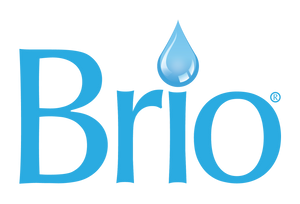You may have seen footage and heard news stories about marine life affected by plastics — with one of the biggest culprits being microplastics.
Twelve million metric tons of plastic are dumped into the ocean annually, and approximately 51 trillion microscopic plastic pieces contribute to that weight. Marine life often mistakes these microplastics for food, and that issue is just the beginning. Those pieces of plastic find their way into our drinking water and food systems.
From soil contamination to human consumption concerns, this topic requires more awareness, especially regarding its effects on water quality and the food supply chain. After all, over one-third of the fish caught for human consumption contains plastic.
Here’s what you need to know to reduce your exposure.
A Closer Look at Microplastics

Microplastics are tiny pieces of plastic, measuring less than five millimeters in length.
The types of microplastics are categorized as follows:
- Primary microplastics are manufactured small intentionally and are used in cosmetics and pharmaceuticals. They are also used to create larger plastic products.
- Secondary microplastics result from the breakdown and degradation of larger plastics.
Both types are found in aquatic and land animals, showcasing the wide-scale environmental impact. The same applies to water systems, as microplastics are found in marine, surface, and groundwater. The smallest particles escape water treatment centers and can be detected in drinking water.
Sources of Microplastics
Here are some of the primary sources of microplastics:
- Personal care products (exfoliants and toothpaste that use microbeads)
- Synthetic clothing (microfibers contribute as much as 35% of the oceans’ microplastic pollution)
- Degrading plastic waste (bottles, caps, shopping bags, etc.)
- Industrial processes (like those from textile, cosmetics, manufacturing, packaging, and agricultural industries)
- Atmospheric deposition (changing how clouds form and the planet’s air quality)
Impact on the Environment

While marine, freshwater, and soil research are specific areas of study, all are interconnected and, to some degree, influence human health.
Whether it is contaminated food or water, microplastics significantly impact the environment. This exposure creates a domino effect.
- Marine ecosystems are threatened by trillions of microplastic particles. One major concern is how these plastics will impact ocean carbon storage.
- Freshwater systems, including isolated mountain water systems, contain microplastics. While these plastics negatively affect freshwater species, there are also major concerns surrounding human drinking water.
- Soil contamination is an issue, as high concentrations of microplastic affect soil quality and fertility. These plastics influence soil density, structure, and water-holding capacity, diminishing the quality of agricultural products.
- Food chain and bioaccumulation are major concerns, which expose humans to plastics and the pollutants that bind to them. When animals consume microplastics, they accumulate in body tissue and are then transferred to humans.
Related: How to Reduce Your Plastic Footprint
Human Health Risks

Yes, microplastics harm animals. However, many are unaware of the level of human exposure. Here are some of the greatest risks.
- Consumption through food and water is an ongoing concern, as microplastics are found in salt, seafood, honey, milk, tea, fruits, vegetables, etc. Researchers found 5.5 plastic particles in every liter of tap water, with higher concentrations in single-use water bottles.
- Respiratory issues from airborne microplastics: Researchers found that microplastics are being sent into the air via ocean spray. The wind can then carry these plastic pieces far distances. Human studies show proof of plastic in lung tissue, potentially contributing to conditions like asthma pneumoconiosis.
- Potential chemical and toxic effects: There are concerns surrounding microplastics and human toxicity, resulting in potential DNA damage, higher cancer risk, reproductive issues, etc.
What’s Next?

Awareness is critical, no matter what the issue.
The more people who are aware, the easier it is to make changes that matter, especially when pushing for new policies and regulations.
Here are some suggestions:
- Reduce your plastic use, and focus on reusables whenever possible. This strategy includes reusable shopping bags, water bottles, food containers, etc. Investing in reusable filtered water bottles can reduce exposure and support a healthier environment.
- Support innovative technologies and solutions by spreading awareness about organizations and researchers that are making a positive impact.
- Get involved in your local area to promote new policy and regulation initiatives. Work with policymakers and government officials to protect your community’s land and water.
Brio Can Help

There is no denying the role plastic plays in modern society, and exposure to microplastics is expected to increase. While many variables are outside of your control, you can choose what you put into your body, including the quality of water you drink.
Standard disposable bottled water and tap water are microplastic sources, so it’s recommended that you invest in filtered water and reusable water bottles. Filtration systems are available for every style, space, and budget.
Brio makes it easy to access quality water, including bottled and bottleless water coolers. There are also undersink filtration solutions. Choosing the right option for your home or office takes some consideration. However, the result is the same, regardless of your choice — you’ll have access to quality water that you can feel good about drinking. You will also support a more sustainable future for the environment, which is directly connected to human health.
Need some help choosing the right filtration system or water setup for your home?




